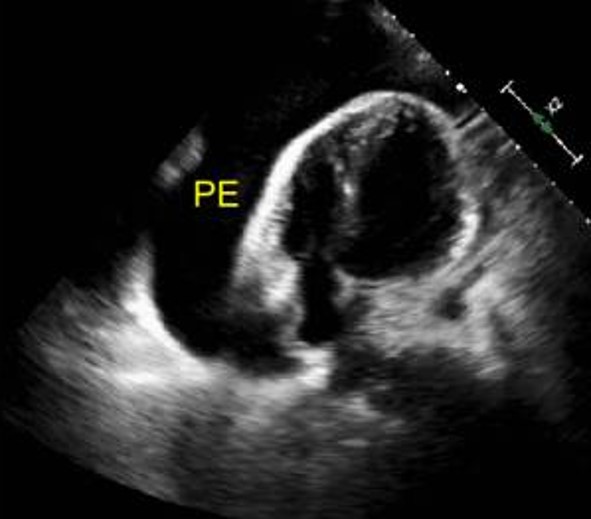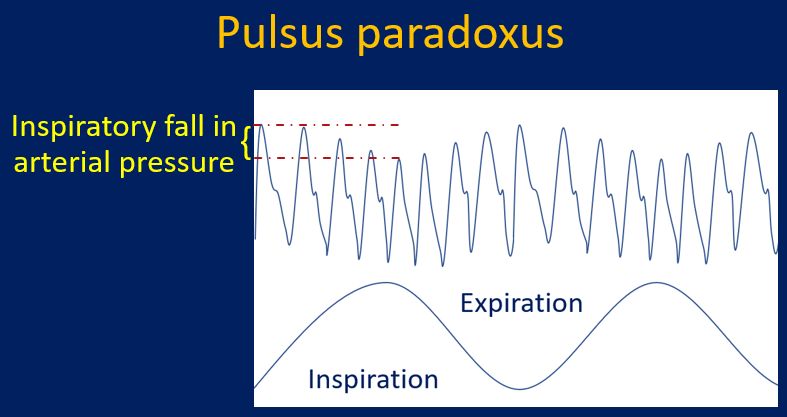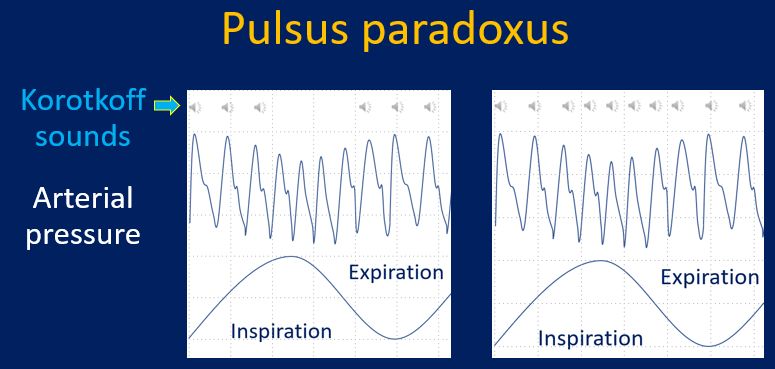How to check for pulsus paradoxus?
How to check for pulsus paradoxus?
Pulsus paradoxus is an exaggeration of the normal inspiratory fall in blood pressure. The paradox in pulsus paradoxus is that the pulse is not well felt when the heart sounds are still audible. The extent of fall in inspiratory pressure can be documented using a sphygmomanometer.

Pulsus paradoxus is the typical finding in cardiac tamponade, though it can occur more commonly in obstructive airways disease. In obstructive airways disease, it is due to the wide swing in intrathoracic pressure. Other less likely causes are constrictive pericarditis and restrictive cardiomyopathy. It has also been reported in massive pulmonary embolism.

A minimum of 10 mm Hg fall in inspiratory blood pressure is taken as significant pulsus paradoxus. The fall is sometimes expressed as 15 mm paradox, 20 mm paradox etc. In an extreme case, the pulse may totally disappear during inspiration and then it is called as pulsus paradoxus totalis.
In a patient being monitored in the intensive care unit, the respiratory fluctuation can be seen in pulse oximetry tracing. If there is an arterial pressure line, it is very easy to document the level of paradox.

When it comes to clinical documentation, which is seldom done in such emergency situations these days with the easy availability of bedside echocardiography, one has to resort to sphygmomanometry.
It is important to note that clinical documentation of pulsus paradoxus is done during normal respiration and not during deep inspiration and expiration. Considering the emergency situation, it may be better checked in conditions like obstructive airways disease than in cardiac tamponade.

Initially, the brachial cuff pressure is inflated above the presumed level of systolic pressure. The cuff is then slowly deflated, listening for the Korotkoff sounds. The level at which the first Korotkoff sound is heard in expiration is noted. As the cuff is deflated further, Korotkoff sounds are heard both in inspiration and expiration. The difference between these two levels is the paradox. The procedure is quite cumbersome and may take 2-5 minutes.
Reference
- Hamzaoui O, Monnet X, Teboul JL. Pulsus paradoxus. Eur Respir J. 2013 Dec;42(6):1696-705.



